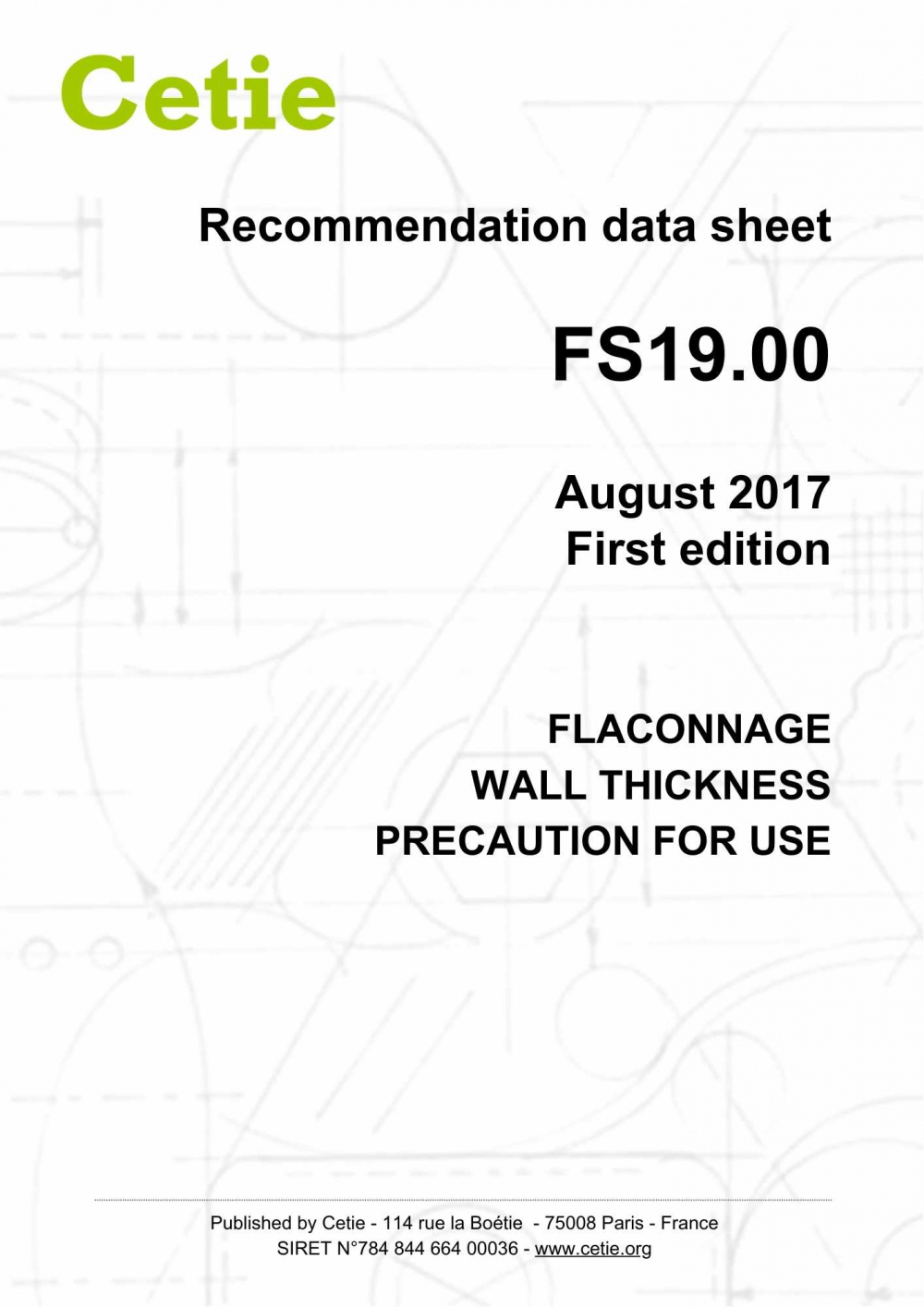FS19.00
First edition
Published on: 01/08/2017
Flaconnage - Wall thickness - Precaution for use
Scope of application
This fact sheet gives recommended minimum glass wall thickness values for flaconnage products. It also describes other factors that need to be taken into account in specifications for mechanical strength.
Table of contents
1. Scope
2. Values
3. Other factors influencing the mechanical strength of flacons
4. Documents in reference
4.1. Standard
4.2. Cetie
5. Data sheet history
2. Values
3. Other factors influencing the mechanical strength of flacons
4. Documents in reference
4.1. Standard
4.2. Cetie
5. Data sheet history
History
First edition: 08/2017
First edition: 08/2017
Contributors
BORMIOLI LUIGI, GERRESHEIMER, HEINZ GLAS, POCHET DU COURVAL, VERRERIES BROSSE, STOELZLE, VERESCENCE.
Document under responsibility of working group:
Flaconnage geometry
WG chair: Lorenzo PASQUALI - BORMIOLI LUIGI S.p.A.
This joint group aims to produce dedicated documentation on glass flacons for the cosmetics, perfume, and pharmacy sectors:
- Cetie 'GME'* neck finishes data sheets concerning glass crimping neck finishes (FEA), screw neck finishes, neck finishes for pumps and snap-on neck finishes, etc.
- All data sheets of the DT15 series, identifying tolerances and standard test methods applicable to molded glass flacons;
- Data sheets concerning critical visual defects of flacons, neck finishes nomenclature, etc.
- Guide of crimping recommendations.
*Initiated by the glass industry in the 1960s, the acronym 'GME' stands for 'Glass Manufacturing Experimental'. The idea was that Cetie, as an unofficial standards body, would only publish 'experimental' data sheets, before submitting these to the official standards bodies. At the same time, in the USA, the acronym 'GME' was also used. As the original meaning was lost over time, this nomenclature for Cetie's glass finishes documents has been, later on, applied to the PET finish data sheets.
